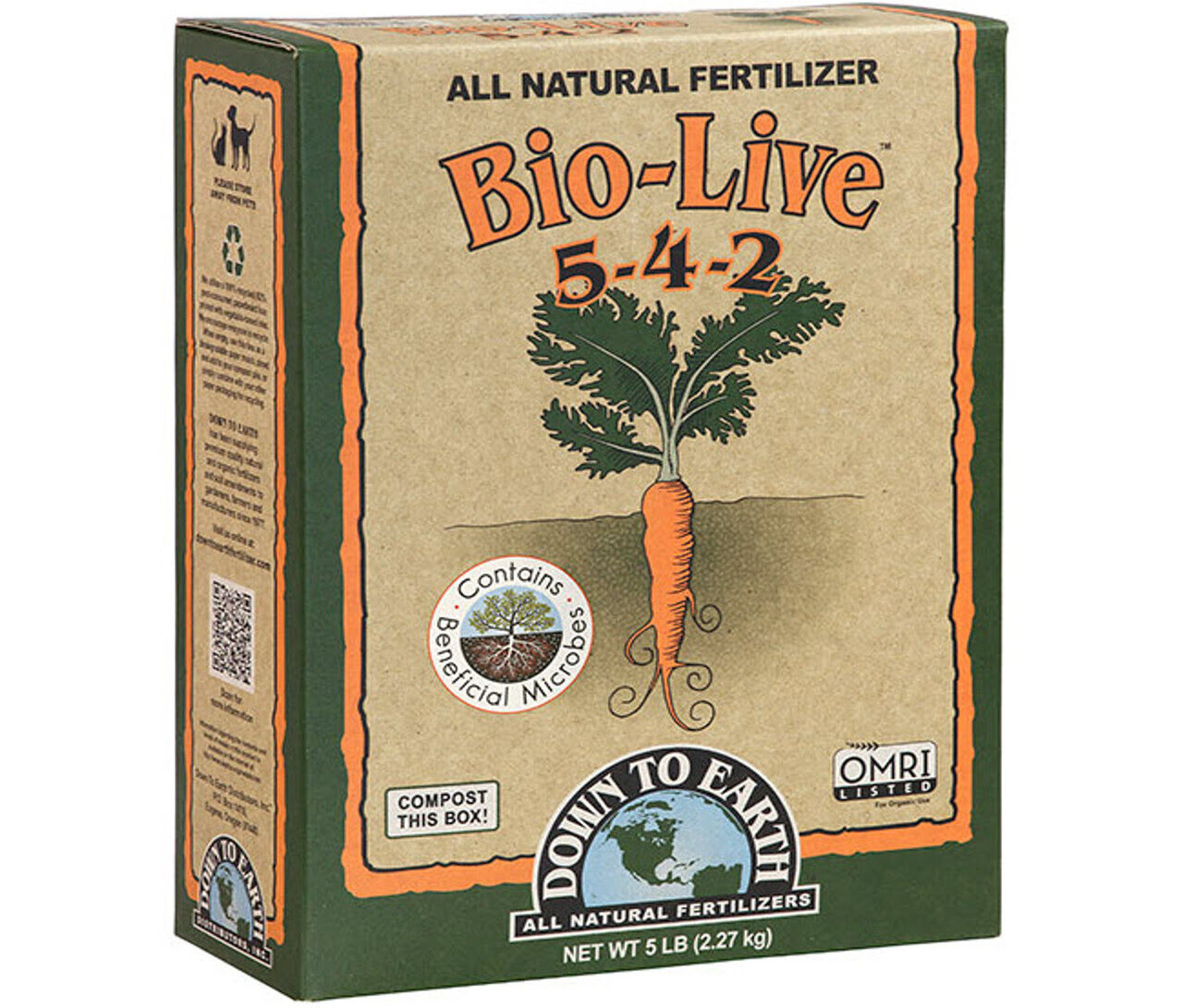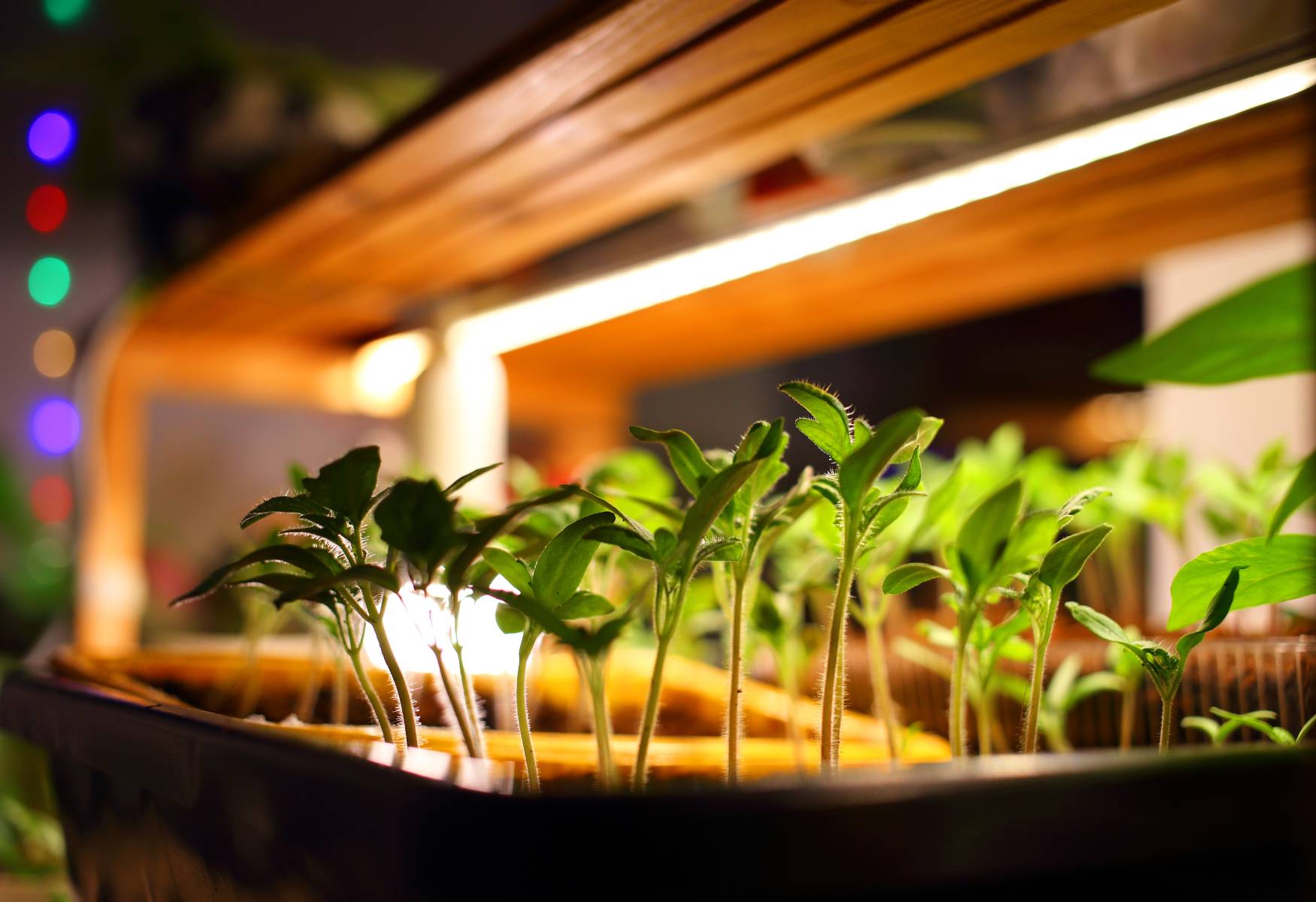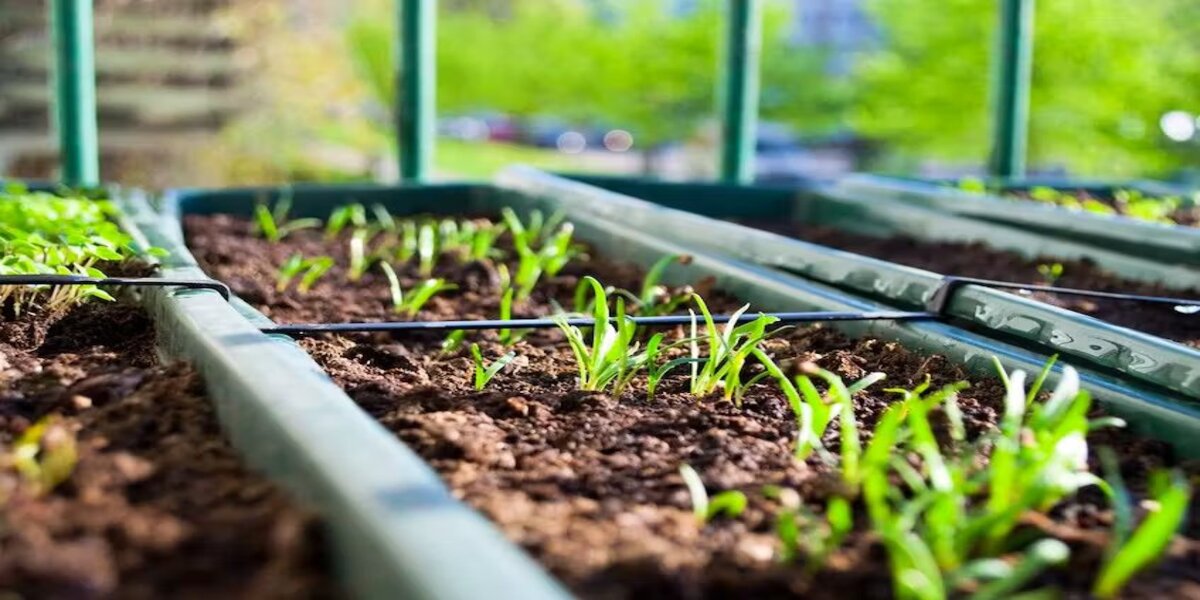Home>Gardening Tips and Tricks>When To Put Fall Fertilizer Down


Gardening Tips and Tricks
When To Put Fall Fertilizer Down
Modified: January 22, 2024
Discover the optimal timing for applying fall fertilizer to your lawn and solve common problems associated with fall fertilizer application.
(Many of the links in this article redirect to a specific reviewed product. Your purchase of these products through affiliate links helps to generate commission for Chicagolandgardening.com, at no extra cost. Learn more)
Table of Contents
Introduction
Welcome to our comprehensive guide on when to put fall fertilizer down. As the seasons change and cooler temperatures approach, it’s important to start thinking about how to prepare your lawn and garden for the winter months. Fall fertilizer is a crucial part of this preparation, providing essential nutrients to help your plants withstand the colder temperatures and emerge strong and healthy in the spring.
The key to successful fall fertilizer application lies in understanding the specific needs of your lawn and garden. Factors such as soil conditions, plant types, and regional climate all play a role in determining the optimal timing and type of fertilizer to use. By arming yourself with this knowledge and following best practices, you can ensure that your plants get the nourishment they need to thrive and flourish.
In this guide, we will walk you through the process of determining when to put fall fertilizer down, including assessing soil conditions, identifying the right type of fertilizer, optimal timing, and best practices for application. We will also discuss important factors to consider before applying fall fertilizer to achieve the best results.
Whether you’re a seasoned gardener or just starting out, this guide will provide you with the necessary insights and tips to make informed decisions about fall fertilizer application. So let’s dive in and discover how to give your lawn and garden the best chance of success during the fall season.
Understanding the Role of Fall Fertilizer
Fall fertilizer plays a vital role in the overall health and resilience of your lawn and garden. Its primary purpose is to provide essential nutrients that plants require for optimal growth and development. While plants need nutrients throughout the year, fall fertilizer is particularly important because it helps prepare plants for the approaching winter months.
One of the key nutrients provided by fall fertilizer is nitrogen. Nitrogen is responsible for promoting healthy leaf and shoot growth, which is crucial for photosynthesis and overall plant vigor. By supplying an adequate amount of nitrogen in the fall, you give your plants the necessary resources to store energy reserves that will sustain them during the dormant winter period.
Phosphorus is another vital nutrient in fall fertilizer. It aids in root development, helps plants establish a strong foundation, and improves nutrient uptake. This is especially important in the fall when plants focus their energy on root growth to withstand the upcoming cold temperatures and harsh weather conditions.
Potassium, also known as potash, is another essential component of fall fertilizer. It contributes to overall plant health and helps plants build tolerance to diseases and stress. Potassium also plays a role in the formation of carbohydrates, proteins, and enzymes, which are vital for plant function and resilience.
In addition to these three primary nutrients, fall fertilizer can also contain secondary and micronutrients, such as calcium, magnesium, and iron, which are needed in smaller quantities but play important roles in plant growth and development.
By providing these essential nutrients through fall fertilizer, you are not only promoting healthy plant growth but also ensuring that your lawn and garden have the necessary resources to withstand the winter months. This can lead to better root development, improved disease resistance, and a faster recovery from harsh winter conditions.
Now that we understand the role fall fertilizer plays in the health of your plants, let’s explore how to assess your soil conditions to determine the specific needs of your lawn and garden.
Assessing Soil Conditions
Before applying fall fertilizer, it’s important to assess the current condition of your soil. This step is crucial as it helps determine the specific needs of your lawn and garden, ensuring that you provide the right nutrients in the right amounts.
There are several methods you can use to assess soil conditions:
- Soil Testing: One of the most reliable and accurate ways to assess soil conditions is through a soil test. You can purchase a soil testing kit from a garden center or send a sample to a laboratory for analysis. The test will provide valuable information about the pH level, nutrient deficiencies, and organic matter content in your soil. Based on the results, you can then determine the appropriate type and amount of fall fertilizer to use.
- Visual Inspection: Another method is to visually inspect your soil. Look out for signs of compaction, such as hard or crusted soil, as it can hinder root growth and nutrient absorption. Check for color variations in the soil, as dark and crumbly soil indicates high organic matter content, while light-colored soil may indicate a need for amendments.
- Observing Plant Health: Monitoring the health of your plants can also provide valuable insights into soil conditions. If you notice stunted growth, yellowing leaves, or poor flowering, it may indicate nutrient deficiencies or imbalances in the soil. Conversely, if your plants are thriving and displaying vibrant foliage, it suggests that your soil conditions are favorable.
By assessing your soil conditions, you can tailor your fall fertilizer application to address any specific deficiencies or imbalances. This ensures that your plants receive the necessary nutrients to thrive and prepares them for the harsh conditions of winter.
Now that we have assessed the soil conditions, let’s move on to identifying the right type of fertilizer to use for your lawn and garden.
Identifying the Right Type of Fertilizer
Choosing the right type of fertilizer is crucial for a successful fall application. The type of fertilizer you select will depend on the specific needs of your lawn and garden, as well as the results of soil testing and any nutrient deficiencies you have identified.
Here are some factors to consider when identifying the right type of fertilizer:
- NPK Ratio: Fertilizers are labeled with a series of numbers indicating the ratio of nitrogen (N), phosphorus (P), and potassium (K) they contain. These elements are essential for plant growth, and the ratio you choose will depend on the needs of your plants. For example, if your soil test indicates a nitrogen deficiency, you may opt for a fertilizer with a higher nitrogen content.
- Slow-Release vs. Quick-Release Fertilizers: Fall fertilizer can be classified as either slow-release or quick-release. Slow-release fertilizers gradually release nutrients over an extended period, providing sustained nourishment to plants. Quick-release fertilizers, on the other hand, release nutrients more rapidly. The choice between the two will depend on factors such as plant needs, soil conditions, and the desired duration of nutrient availability.
- Organic vs. Synthetic Fertilizers: Another consideration is whether to use organic or synthetic fertilizers. Organic fertilizers are derived from plant or animal matter and provide nutrients in a slow-release form. They improve soil health and fertility over time. Synthetic fertilizers, on the other hand, are manufactured and provide a quick nutrient boost. Choose the option that aligns with your gardening philosophy and goals.
- Micronutrients: In addition to the primary nutrients, consider whether your plants may benefit from micronutrients. Micronutrients, such as iron, manganese, and zinc, are required in smaller quantities but are essential for healthy plant growth. If your soil test indicates any deficiencies in these nutrients, choose a fertilizer that includes them.
By considering these factors and the specific needs of your lawn and garden, you can select the right type of fertilizer that will provide targeted nourishment and support for your plants.
Next, let’s explore the optimal timing for fall fertilizer application.
Optimal Timing for Fall Fertilizer Application
The timing of fall fertilizer application is crucial to ensure that your plants receive the maximum benefit and are adequately prepared for the winter months. The exact timing may vary depending on your location, climate, and the specific needs of your lawn and garden.
Here are some general guidelines to help you determine the optimal timing:
- Temperature: It’s important to wait until the temperatures have cooled down before applying fall fertilizer. This is usually when daytime temperatures are consistently below 85°F (29°C) and nighttime temperatures are around 65°F (18°C). Fertilizing too early or during hot temperatures can stress the plants and cause nutrient burn.
- Scheduling: Aim to apply fall fertilizer about 4-6 weeks before the first expected frost. This gives the plants enough time to absorb and utilize the nutrients before going dormant.
- Grass Growth: For lawns, it’s ideal to apply fall fertilizer when grass growth is still active. This is usually in late summer or early fall when the grass is actively photosynthesizing and storing carbohydrates in the roots for the winter.
- Garden Plants: Perennial plants, shrubs, and trees can benefit from fall fertilizer application after they have finished flowering or fruiting. This allows them to divert their energy towards root development and nutrient absorption.
It’s important to note that these are general guidelines, and you may need to adjust the timing based on your specific circumstances. Consult local gardening resources or speak to a horticulture expert familiar with your region for more precise recommendations.
By applying fall fertilizer at the optimal time, you provide your plants with the necessary nutrients to strengthen their root systems, improve winter hardiness, and promote overall health and vitality.
Now that we know the optimal timing for fall fertilizer application, let’s explore best practices for applying it to achieve the best results.
Applying Fall Fertilizer: Best Practices
To ensure the effectiveness of your fall fertilizer application, it’s important to follow these best practices:
- Read and Follow Instructions: Carefully read the instructions on the fertilizer package and follow the recommended application rates. Applying too much fertilizer can damage plants, while applying too little may not provide the desired results. Follow the instructions for both timing and frequency of application.
- Apply Evenly: Use a spreader or broadcast the fertilizer evenly across your lawn or garden. This ensures consistent nutrient distribution and avoids over or under-fertilizing certain areas.
- Avoid Fertilizer Runoff: When applying fall fertilizer, be mindful of nearby water sources. Avoid applying it close to ponds, streams, or storm drains to prevent fertilizer runoff and potential water pollution. Consider using a drop spreader or applying the fertilizer before rain is expected, helping it soak into the soil instead of washing away.
- Water After Application: After applying fall fertilizer, water your lawn or garden lightly. This helps activate the fertilizer and helps it penetrate the soil to reach the plant’s roots. Watering also reduces the risk of fertilizer burn and ensures proper nutrient absorption.
- Mow Before Application: For lawns, it’s best to mow the grass slightly shorter than usual before applying fall fertilizer. This helps the fertilizer reach the soil surface more effectively and allows for better nutrient absorption.
- Monitor Weather Conditions: Keep an eye on the weather forecast after applying fall fertilizer. If heavy rain is expected shortly after application, consider adjusting your timing to avoid excessive runoff. Alternatively, you can also cover the treated area with a light layer of mulch to protect the fertilizer from getting washed away.
- Clean Up Spills: In case of any spills or fertilizer that accidentally lands on non-target areas, clean it up promptly to prevent potential damage. Use a broom or brush to sweep away any excess fertilizer.
By following these best practices, you can ensure that your fall fertilizer application is effective, efficient, and environmentally responsible. These steps help minimize potential damage to plants while maximizing the benefits of the fertilizer.
Now that we have explored best practices for applying fall fertilizer, let’s discuss the important factors to consider before applying fall fertilizer.
Factors to Consider Before Applying Fall Fertilizer
Before applying fall fertilizer, there are several important factors to consider. These factors will help you make informed decisions regarding fertilizer selection, application rates, and overall timing. By taking these factors into account, you can optimize the effectiveness of your fall fertilizer application.
- Soil Test Results: Soil testing provides valuable insights into the nutrient composition and pH levels of your soil. Analyzing the soil test results will help you identify any nutrient deficiencies or imbalances that need to be addressed. This information will guide you in choosing the right type of fertilizer and determining the appropriate application rates.
- Plant Needs: Different plants have varying nutrient requirements. Consider the specific needs of the plants in your lawn or garden. Some plants may benefit from higher nitrogen levels, while others may require more phosphorus or potassium. Tailoring the fertilizer to meet the specific needs of your plants will promote optimal growth and health.
- Regional Climate: The climate of your region plays a significant role in determining the best time to apply fall fertilizer. Consider the average first frost date in your area and the length of the fall season. Adjust your fertilizer application timing accordingly to give your plants enough time to absorb the nutrients before going dormant for winter.
- Environmental Impact: It’s important to be mindful of the potential environmental impact of your fall fertilizer application. Avoid fertilizing near water bodies to prevent runoff and water pollution. Consider using slow-release or organic fertilizers, which release nutrients gradually and are less likely to leach into water sources.
- Previous Fertilizer Applications: Take into account any recent fertilizer applications you have made. If you applied fertilizer earlier in the growing season, your plants may still have sufficient nutrient reserves. Adjust your fall fertilizer application rates accordingly to avoid overloading the soil with nutrients.
- Nearby Vegetation: Consider any nearby vegetation that may be sensitive to fertilizer runoff. Avoid applying fertilizer near sensitive plants or ornamental gardens to prevent accidental damage.
By considering these factors before applying fall fertilizer, you can ensure that your application is tailored to the specific needs of your lawn and garden. This will result in improved plant health, stronger resistance to winter stress, and a healthier landscape overall.
Now that we have discussed the factors to consider, we can conclude this comprehensive guide on when to put fall fertilizer down. With the knowledge and best practices shared in this guide, you can confidently prepare your lawn and garden for the approaching winter months, ensuring that your plants emerge strong, healthy, and vibrant in the spring.
Conclusion
In conclusion, applying fall fertilizer is a critical step in preparing your lawn and garden for the winter months. By understanding the role of fall fertilizer, assessing soil conditions, identifying the right type of fertilizer, timing the application correctly, and following best practices, you can ensure that your plants receive the necessary nutrients for optimal growth and winter hardiness.
Fall fertilizer provides essential nutrients such as nitrogen, phosphorus, potassium, and micronutrients that promote healthy root development, improve disease resistance, and enhance overall plant vigor. Assessing soil conditions through soil testing, visual inspection, and observing plant health helps determine the specific nutritional needs of your lawn and garden.
Choosing the right type of fertilizer involves considering the NPK ratio, slow-release vs. quick-release options, and organic vs. synthetic choices. This allows you to tailor your fertilizer selection to address any deficiencies or imbalances detected in your soil.
The optimal timing for fall fertilizer application depends on temperature, scheduling, grass growth, and the needs of specific garden plants. Applying the fertilizer at the right time maximizes nutrient absorption and prepares plants for winter dormancy.
Following best practices, such as reading instructions, applying evenly, avoiding runoff, watering after application, mowing before application, monitoring weather conditions, and cleaning up spills, ensures an effective and efficient fertilizer application while minimizing potential damage.
Key factors to consider before applying fall fertilizer include soil test results, plant needs, regional climate, environmental impact, previous fertilizer applications, and nearby vegetation. Taking these factors into account helps you make informed decisions and optimize the effectiveness of your fall fertilizer application.
With this comprehensive guide, you now have the knowledge and tools to confidently apply fall fertilizer to your lawn and garden. By providing the necessary nutrients and care, you can set the stage for healthy plant growth, increased resistance to winter stress, and a thriving landscape in the coming spring.





